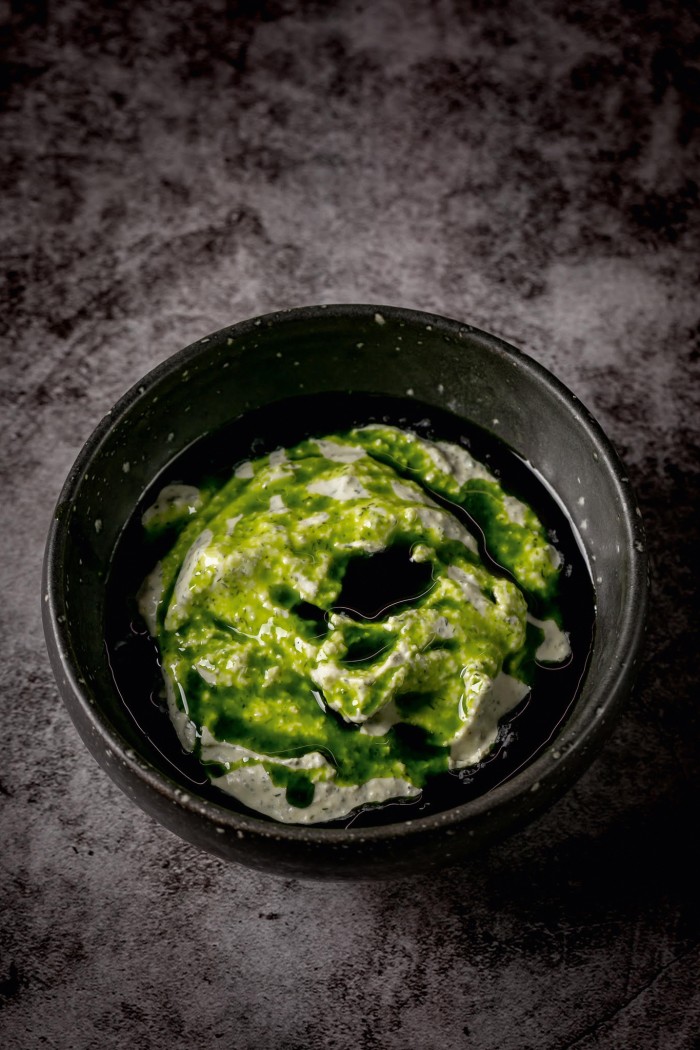Yuzu kosho – the ultimate flavour enhancer

Roula Khalaf, Editor of the FT, selects her favourite stories in this weekly newsletter.
Sonoko Sakai, the Japanese-American cookery teacher and author of Japanese Home Cooking, was given her first yuzu tree eight years ago by a student. She planted it in her small hillside garden in Highland Park, Los Angeles, and was rewarded each year by the meanest crop of tiny fruit – certainly not the large fragrant yuzu she’d grown up with in Tokyo. But this season, despite severe drought and a ravaging by insects that left the tree looking “really funky”, the tree yielded three dozen plump fruit, which she used to make yuzu kosho.
A spicy, salty, floral condiment made from yuzu peel, chillies and salt, yuzu kosho is the ultimate flavour enhancer that can be eaten fresh but is best kept in the fridge to ferment. Sakai’s version uses Calabrian chillies from her garden and a little yuzu juice to turn the paste creamy. She has been selling lip-balm-sized pots of it at the Hollywood Farmers’ Market alongside her signature curry powder and shichimi pepper.

“I didn’t grow up with yuzu kosho,” she says of this speciality condiment from the Kyushu region in south-west Japan. “The first time I encountered it was when I was in my mid-20s with the dish chanko nabe, a hotpot that sumo wrestlers eat. This often comes with chicken meatballs. And chicken goes really well with yuzu kosho. Now it’s amazing how familiar people [in the west] are with yuzu kosho. It’s not only a standard with izakaya, grilled chicken and sashimi, but western chefs are serving it with lots of things, too.”
In Japanese Home Cooking, Sakai pairs yuzu kosho with chicken yakitori, grilled tri-tip steak and kombu-cured Thai snapper sashimi. There’s also a recipe for mochi waffles with fried chicken, which includes a yuzu-flavoured maple sauce made from one teaspoon of yuzu kosho, a quarter of a cup of maple syrup and two tablespoons of soy sauce.


More widely among western chefs, Björn Frantzén of three-Michelin-starred restaurant Frantzén in Stockholm has been an influential early adopter. On a menu that knits together Nordic cuisine with Japanese touches, he’s been known to serve dishes like Norwegian king crab and Alfonsino (red bream) with yuzu kosho beurre blanc. At his newly opened Studio Frantzén at Harrods, a version of this dish appears using salmon from the Faroe Islands.
Elsewhere in London, chef Angelo Sato’s comb-to-tail yakitori bar Humble Chicken promises a range of koshos, including an aromatic citrus kosho (made from grapefruit, oranges, limes and lemons) to accompany the Achilles skewers with smoky charcoal-grilled fat, and a more fiery red yuzu kosho made with red Fire Thai chillies (instead of jalapeños) served with shoulder skewers and fermented daikon.


At the Langham’s Artesian, where Sato has created the new bar menu, you will also find mussels with citrus kosho ponzu that, Sato says, “adds depth though most people don’t know it’s there”. At Middle Eastern restaurant The Tent in Fitzrovia, chef John Javier similarly uses yuzu kosho in place of more authentic seasonings. The condiment cuts through the richness of a labneh tzatziki and is mixed with olive oil, lemon juice, sugar and salt to dress tomatoes in a whipped tofu and tomato salad. “It makes the dish pop,” he says.

Given yuzu are seasonal and costly (about £80 a kilo from Natoora and usually available until the end of January), there’s a lot to be said for using store-bought yuzu kosho (the brand Mera is recommended) or making it with other citrus instead. In Catherine Phipps’s The Little Citrus Cookbook (a new re-edition of her 2017 book Citrus) she makes the case for a Caribbean-inspired lime-Scotch bonnet kosho (where the Scotch bonnet chillies are tempered with mild red or green chillies) and a lemon-mandarin kosho (using 15g lemon zest to five grams mandarin zest, plus 40g red chillies and six grams salt). Play around with different citrus and chillies, Phipps says: “There is a massive range of heat with a Scotch bonnet or Thai green chilli, so taste the chillies first to see how hot they are. Then adjust the amount of zest accordingly. Often with citrus, the sweeter the juice, the more bitter the zest. So use citrus that aren’t sweet but have a beautifully perfumed, sour zest. Like Seville oranges, mandarins, lemons and limes.”
As it happens, Phipps owns a yuzu tree too, which she was bought from The Wasabi Company a few years ago. It sits in a pot in her garden and fares remarkably well in the British weather. “They’re very hardy,” she points out. From the latest crop, she’ll naturally be making yuzu kosho, which still enjoys pride of place among her condiments. “It’s one of those things that immediately brings food to life,” she says. Plus a little goes a long way.
Comments